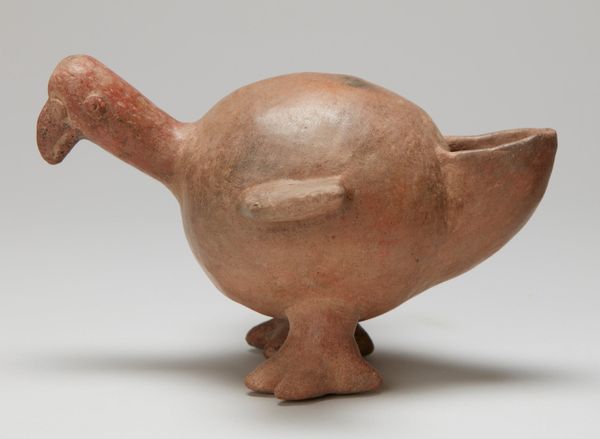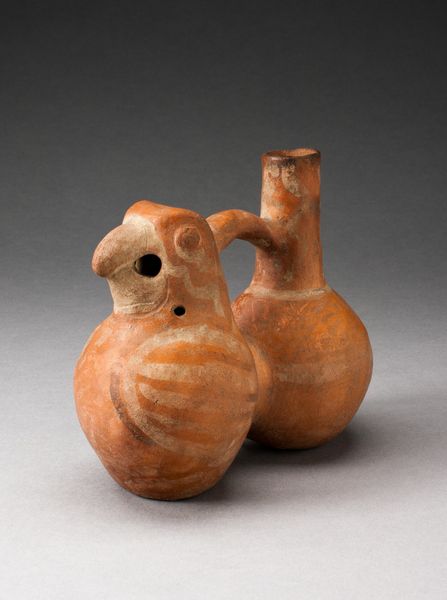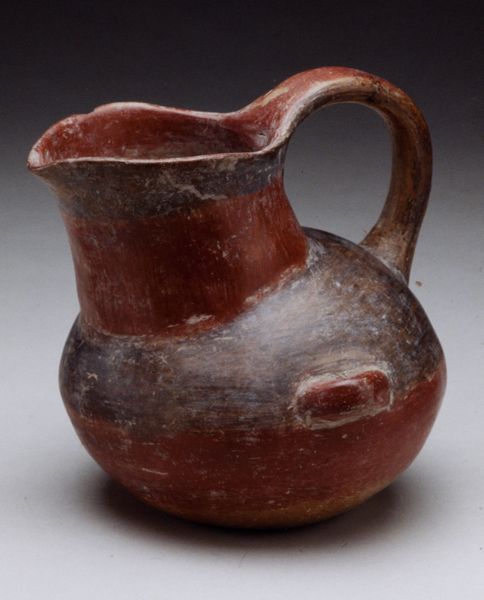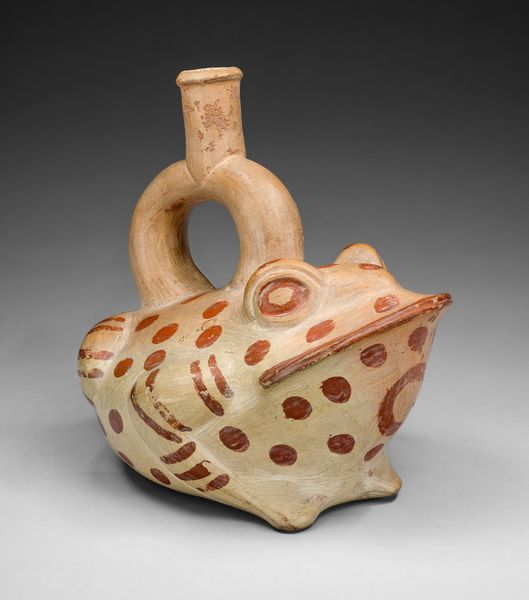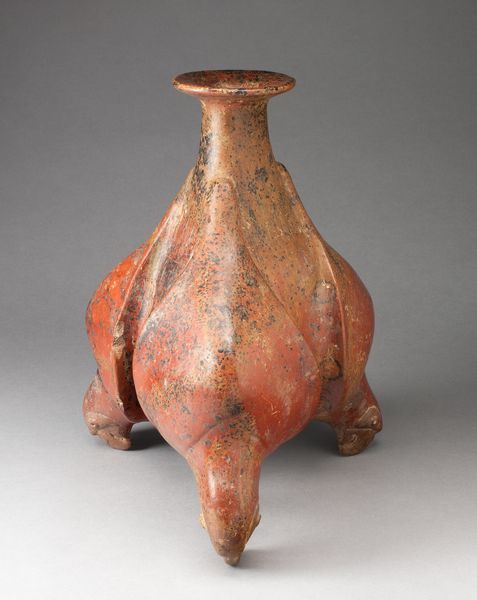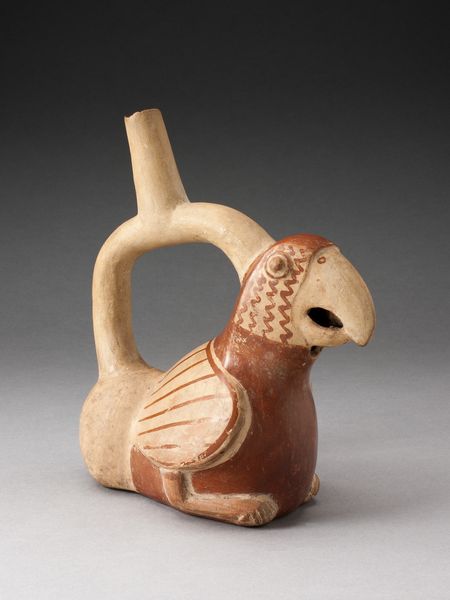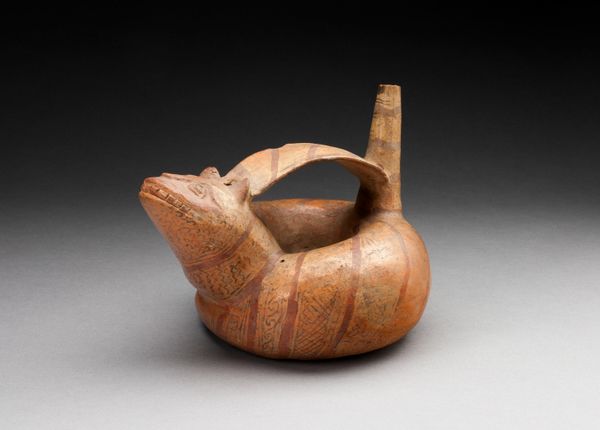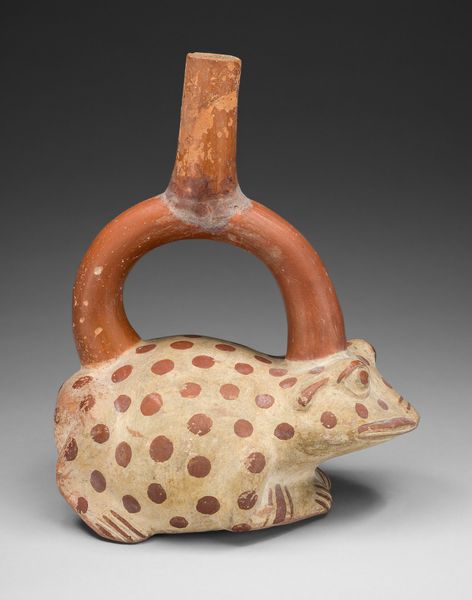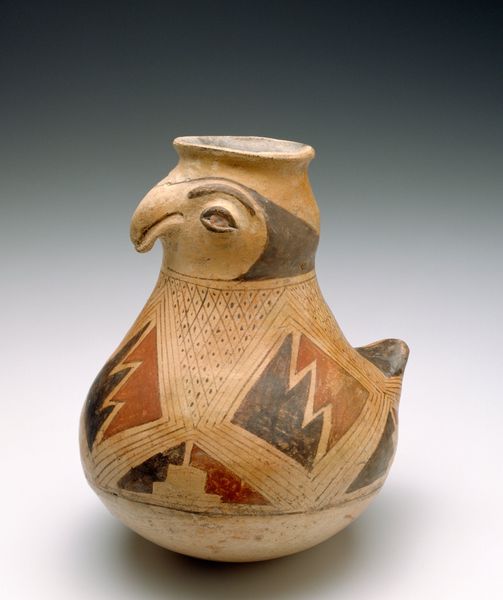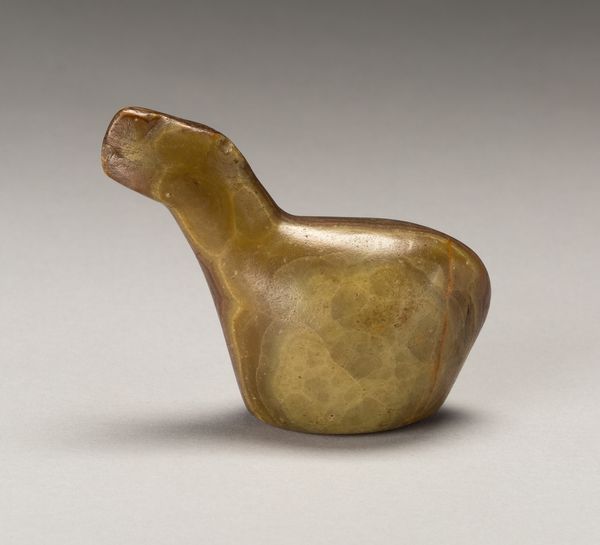
ceramic, earthenware, sculpture, terracotta
#
ceramic
#
figuration
#
form
#
earthenware
#
sculpture
#
ceramic
#
terracotta
#
indigenous-americas
Copyright: Public Domain
Editor: This is a duck-shaped jar from the Colima culture, crafted sometime between 201 and 600 AD out of earthenware. It has a simple, rounded form. What strikes me most is how functional it seems despite its artistic flair. What are your initial thoughts on this piece? Curator: I see here a profound connection between form and function rooted in the material reality of the Colima people. This isn't just about aesthetic representation; it speaks to a culture where everyday objects embodied symbolic meaning tied to the earth and its resources. Look at the craftsmanship: the smooth, burnished surface of the earthenware. It reflects a sophisticated understanding of ceramic technology. How do you think the process of creating this object might have been intertwined with the community’s social structure? Editor: I hadn't considered that. It does seem that making something like this would have involved skill and perhaps specialization within the community. Do you think the choice of earthenware tells us something specific about the Colima people's environment? Curator: Absolutely. The use of earthenware points to the availability of clay in the region and the Colima’s expertise in firing techniques. The duck form itself might have had connections to local ecology or specific belief systems relating to agriculture and fertility. Imagine the labor involved: sourcing the clay, shaping the jar, firing it, perhaps even trading it. This jar isn't just an artifact; it's a testament to human ingenuity and resourcefulness. What purposes could this duck jar have fulfilled beyond simple storage? Editor: Perhaps it was used in rituals? Or maybe as a symbol of status, showcasing skill and access to resources? Curator: Precisely! We must remember the broader context of production and consumption in order to appreciate the profoundness of art like this. It changes how we view these types of art, moving from appreciating mere artistic endeavors to acknowledging artifacts that represent their daily lives and customs. Editor: That makes me appreciate it so much more, seeing it as connected to so many aspects of their society. Curator: Indeed, and considering materiality, craft, and daily use also humanizes those who came before us and, by extension, ourselves.
Comments
No comments
Be the first to comment and join the conversation on the ultimate creative platform.
